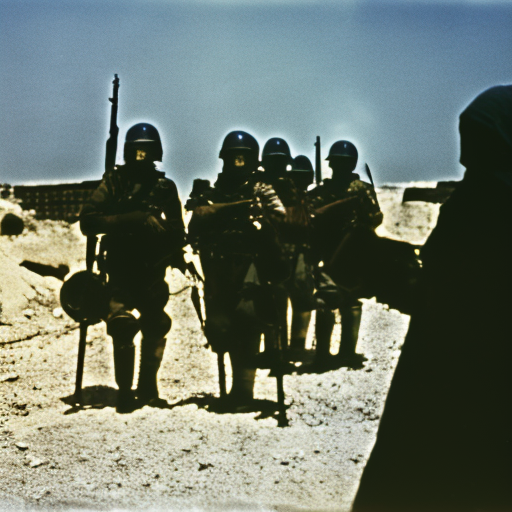The Six-Day War (1967)
The Six-Day War was a brief but significant conflict that took place between June 5 and June 10, 1967, primarily involving Israel and its neighboring Arab states of Egypt, Jordan, and Syria. The war resulted in a decisive Israeli victory, leading to significant territorial gains for Israel and reshaping the geopolitical landscape of the Middle East.
Background
Tensions had been escalating in the region for years prior to the war. The Arab states, led by Egypt’s President Gamal Abdel Nasser, had been hostile towards Israel since its establishment in 1948. Nasser’s decision to close the Straits of Tiran, a crucial waterway for Israeli shipping, and his military buildup in the Sinai Peninsula further heightened tensions.
Israeli Preemptive Strike
On June 5, 1967, Israel launched a preemptive strike against Egypt, targeting its air force and effectively neutralizing it within hours. This surprise attack, known as Operation Focus, allowed Israel to gain air superiority and control over the Sinai Peninsula.
Israeli Advances
With air superiority established, Israel swiftly advanced on multiple fronts. In the south, Israeli forces overran the Sinai Peninsula, capturing the Gaza Strip and the strategic Straits of Tiran. In the north, they pushed into the Golan Heights, capturing it from Syria. In the west, Israeli forces advanced into the West Bank, capturing East Jerusalem and the Old City, which included important religious sites such as the Western Wall and the Al-Aqsa Mosque.
Jordan’s Involvement
Jordan, which had signed a defense pact with Egypt, entered the war by shelling Israeli positions in Jerusalem. In response, Israel launched an offensive against Jordanian forces in the West Bank. The Israeli advance led to the capture of the entire West Bank, including the cities of Jericho and Bethlehem.
End of the War
By June 10, 1967, the war had come to an end. Israel had achieved a decisive victory, capturing the Sinai Peninsula and the Gaza Strip from Egypt, the Golan Heights from Syria, and the West Bank, including East Jerusalem, from Jordan. The war also resulted in a large number of Palestinian refugees and a significant increase in Israeli territory.
Impact
The Six-Day War had far-reaching consequences for the region. Israel’s victory led to a significant increase in its territory, including the reunification of Jerusalem. The war also had a profound impact on the Palestinian people, as it resulted in the displacement of hundreds of thousands of Palestinians and the occupation of the West Bank and Gaza Strip by Israel.
Aftermath
In the aftermath of the war, Israel faced the challenge of administering the newly occupied territories and dealing with the Palestinian population. The war also led to increased tensions between Israel and its Arab neighbors, setting the stage for future conflicts, such as the Yom Kippur War in 1973.
Conclusion
The Six-Day War of 1967 was a significant event in the history of the Middle East. Israel’s preemptive strike and subsequent military successes reshaped the region’s geopolitical landscape. The war had lasting consequences, including the ongoing Israeli-Palestinian conflict and the continued occupation of the West Bank and Gaza Strip.












